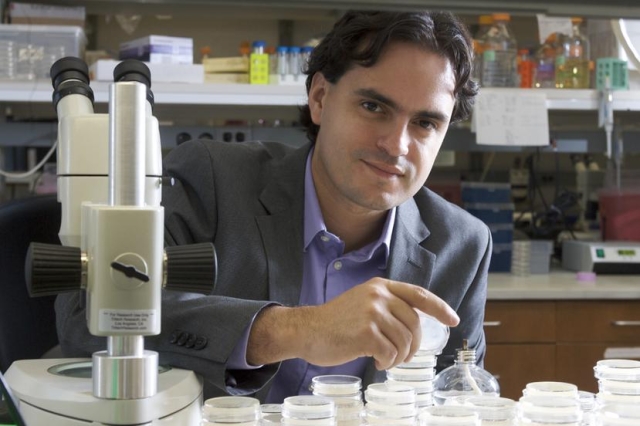Puerto Rican researcher makes important discovery about Parkinson's disease
Submitted on 4 February 2022 - 2:24pm
This article is reproduced by CienciaPR with permission from the original source.
CienciaPR Contribution:
Original Source:

Dr. Daniel Colón Ramos led the study that was published this month in the scientific journal "Neuron"
A study, led by Puerto Rican researcher Daniel Colón Ramos, made an important discovery in the scientific maze to better decipher Parkinson's disease.
The group, composed of 15 researchers, identified a protein that is key to autophagy, a process or natural mechanism of cellular regeneration that basically consists of the elimination of cellular waste.
The findings of this study, published in the January 21 issue of the scientific journal Neuron, report that the identified protein is called ATG-9.
"Parkinson's disease is a neurodegenerative disease in which the neurons are dying and the people (affected) are losing their motor faculties and (their functions) are dying," explained Colón Ramos.
Previous studies carried out on relatives of patients with this condition who develop it earlier than usual, he said, have found an apparent hereditary genetic link.
It is estimated that some 25,000 people in Puerto Rico suffer from Parkinson's disease. In the United States, the estimate is over one million cases, with some 60,000 new diagnoses a year.
"It has been found that there are some proteins that regulate neuron activity, but when these genes are damaged they are associated with Parkinson's disease," said Dr. Colón Ramos.
As he explained, neurons are frequently active and their machinery is subject to wear and tear.
"The more active these neurons become, the greater the need for cell degradation to get rid of damaged cellular components," said the professor of Neuroscience and Cell Biology at Yale School of Medicine and lead author of the article.
During autophagy, he explained, neurons create organelles that are the cellular equivalent of a garbage truck, a structure that isolates, transports and then destroys damaged cellular components. Where and when these organelles are formed is important, he said, because the collection of damaged cellular components must be programmed and coordinated.
"It has been a mystery how neurons coordinate this process," he highlighted.
The researchers found that as these neurons perform their function and transmit information, ATG-9 acts as a kind of activity log that, when neuron activity increases, helps alert the cells to produce more autophagy for future clearance.
"This helps to understand how cells work. It's like deciphering how a car works. Then, if they bring you a damaged car, you can fix it," he concluded.







